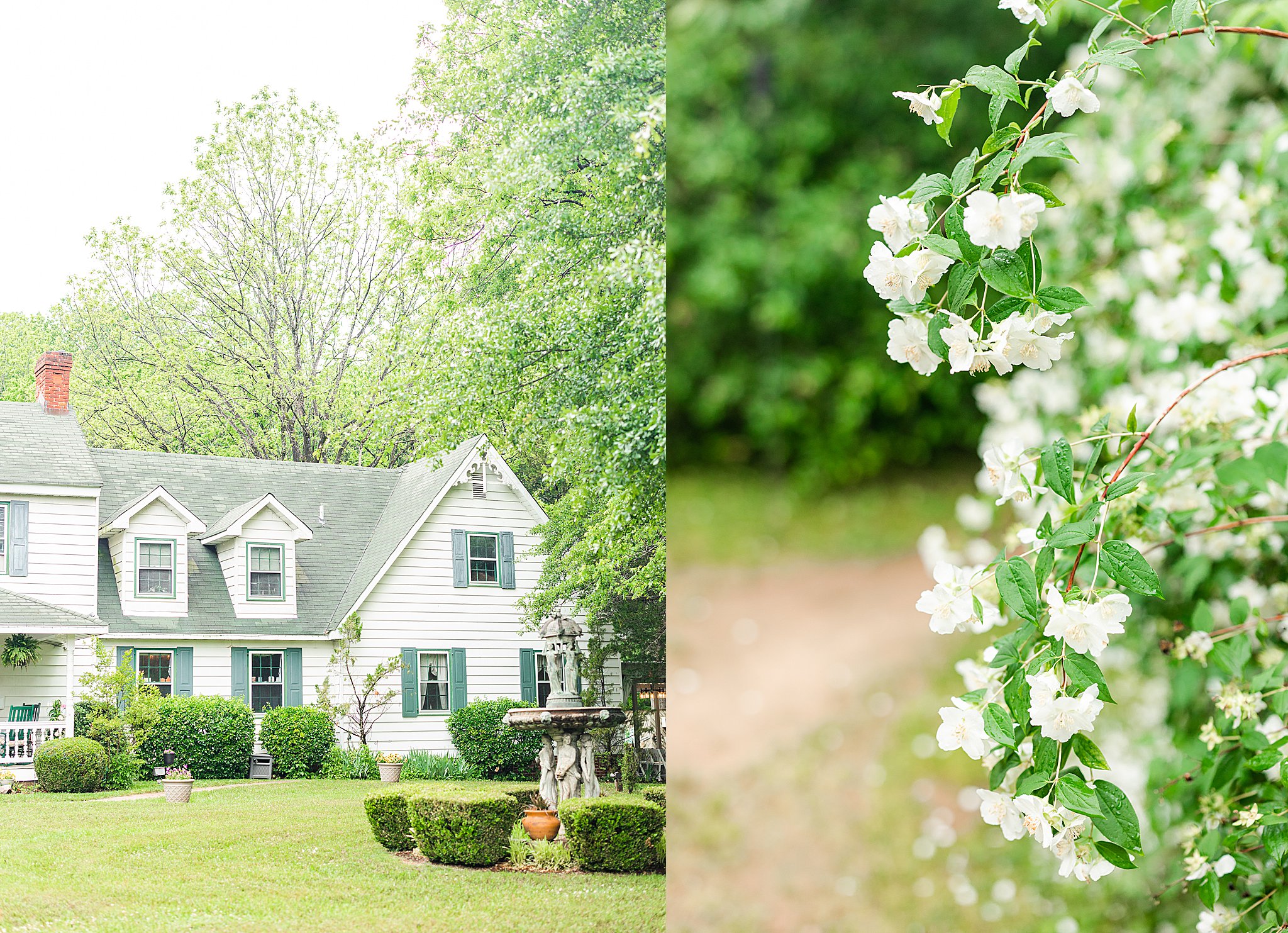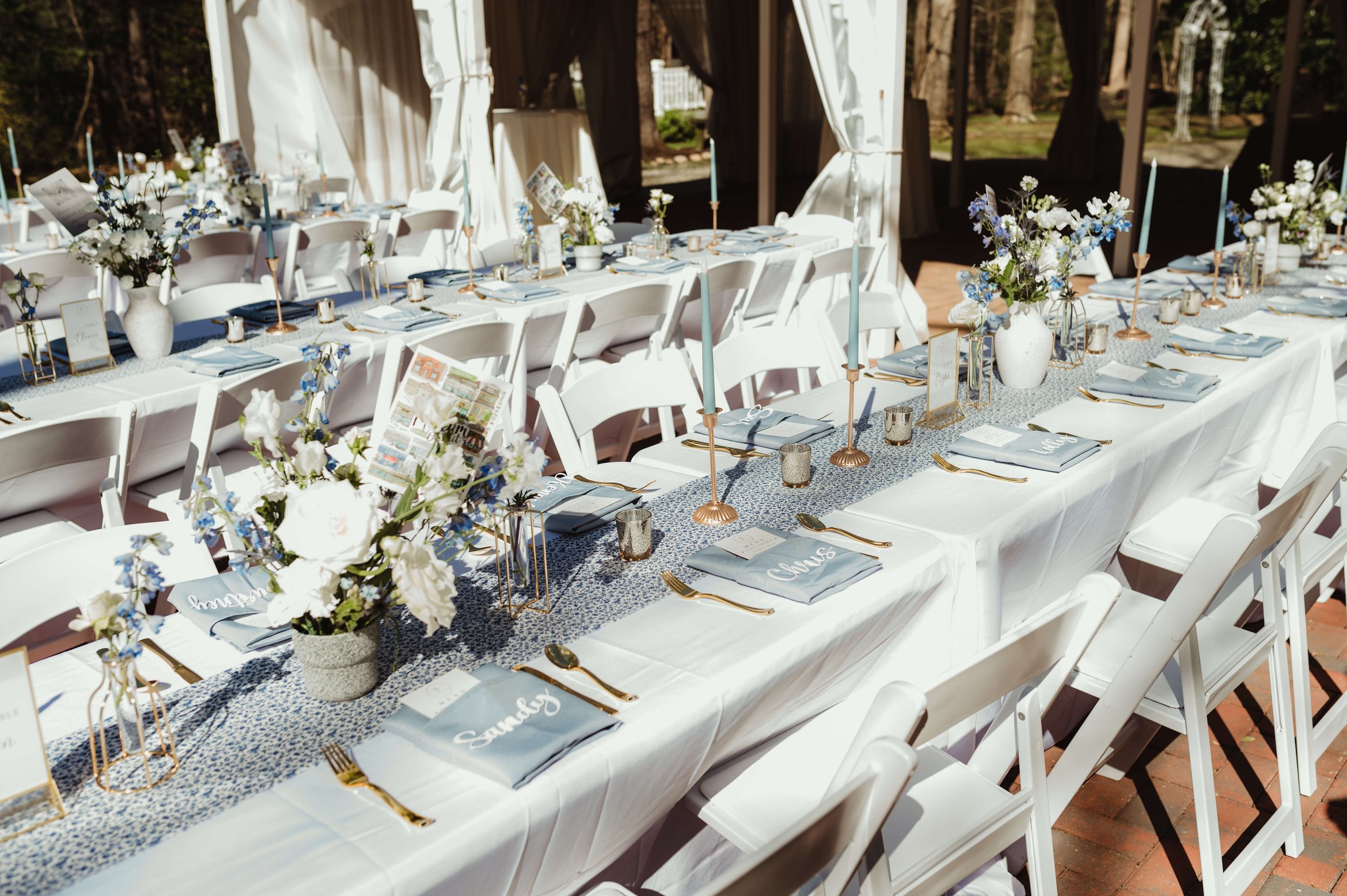Historic Jasmine: A Timeless Treasure
Jasmine, with its captivating fragrance and delicate blossoms, holds a significant place in history, entwined with cultures and traditions across the globe. Known as the "Queen of the Night" in some cultures, this enchanting flower has been revered for centuries, leaving an indelible mark on art, literature, and human experience.
Originating in the tropical and subtropical regions of Asia, jasmine's cultivation dates back thousands of years. Ancient civilizations, including the Chinese, Indian, and Persian, cherished jasmine for its medicinal properties, using it to treat various ailments and promote well-being. Its sweet, intoxicating scent was also highly prized, used in perfumes, cosmetics, and religious ceremonies.
Jasmine's allure transcends its physical beauty. In many cultures, it symbolizes purity, love, and new beginnings. In China, it is associated with the moon and the arrival of spring. In India, it is often used to adorn brides and is believed to bring good fortune and happiness. The flower's delicate yet resilient nature has also made it a symbol of hope and perseverance.
Throughout history, jasmine has inspired poets, artists, and musicians. Its timeless fragrance has been captured in countless poems and songs, while its delicate blossoms have been immortalized in paintings and sculptures. From the Mughal gardens of India to the courtyards of Andalusia, jasmine's presence has graced some of the world's most beautiful and historic settings.
Today, historic jasmine continues to captivate hearts and minds around the world. Its cultivation remains a vital part of many cultures, and its products are used in a wide range of industries, from perfumery to cosmetics to herbal medicine. As we delve into the rich history and enduring legacy of historic jasmine, we uncover a treasure that has stood the test of time, enchanting and inspiring generations past and present.
Historic Jasmine
Throughout history, jasmine has held significant cultural, medicinal, and aesthetic value. Its multifaceted nature can be explored through six key aspects:
- Fragrance: Enchanting and intoxicating, jasmine's scent has captivated cultures for centuries.
- Beauty: Delicate white blossoms symbolize purity, love, and new beginnings.
- Symbolism: In various cultures, jasmine represents the moon, spring, and hope.
- Medicine: Ancient civilizations used jasmine for its medicinal properties, treating ailments and promoting well-being.
- Art: Jasmine's beauty and fragrance have inspired poets, artists, and musicians throughout history.
- Culture: Jasmine cultivation and products are deeply embedded in many cultures around the world.
These key aspects intertwine to create the rich tapestry of historic jasmine. Its fragrance evokes memories and emotions, while its beauty and symbolism add grace and meaning to countless cultural traditions. From ancient medicinal practices to modern-day perfumes, jasmine's journey through history showcases its enduring power to enchant and inspire.
1. Fragrance
The captivating fragrance of historic jasmine has played an integral role in shaping its allure and cultural significance. Its sweet, intoxicating scent has captivated cultures across the globe, leaving an indelible mark on history and human experience.
As a component of historic jasmine, fragrance holds immense importance. It has been a driving force behind the flower's cultivation and use in various aspects of life. Jasmine's scent has been harnessed for centuries in the creation of perfumes, cosmetics, and religious offerings. Its ability to evoke emotions and create a sense of well-being has made it a prized ingredient in traditional medicine and aromatherapy.
Real-life examples abound to illustrate the practical significance of jasmine's fragrance. In ancient China, jasmine flowers were used to scent tea, creating a beverage that was both aromatic and refreshing. In India, jasmine garlands are worn by brides and grooms during weddings, symbolizing purity, love, and new beginnings. The scent of jasmine is also believed to promote relaxation and sleep, making it a popular ingredient in scented candles and diffusers.
Understanding the connection between fragrance and historic jasmine is crucial for appreciating its enduring legacy. The enchanting scent of jasmine has captivated cultures for centuries, influencing its cultivation, use, and symbolism. From ancient rituals to modern-day applications, jasmine's fragrance continues to enchant and inspire, leaving a lasting impression on human history and culture.
2. Beauty
The delicate white blossoms of historic jasmine are not merely objects of beauty but potent symbols that have shaped its cultural significance throughout history. Their purity, love, and new beginnings have left an indelible mark on various aspects of human experience.
- Symbol of Purity: In many cultures, jasmine's white blossoms represent purity and innocence. In ancient Greece, brides wore jasmine garlands to symbolize their chastity. In India, jasmine flowers are offered to deities as a .
- Symbol of Love: Jasmine's delicate fragrance and beautiful blossoms have long been associated with love and romance. In China, the flower is known as the "Flower of Love" and is often given as a token of affection. In the Middle East, jasmine is used in wedding ceremonies and is believed to bring good fortune to the couple.
- Symbol of New Beginnings: The delicate white blossoms of jasmine also represent new beginnings and hope. In some cultures, jasmine flowers are planted near homes to welcome new life and prosperity. In other cultures, jasmine tea is consumed to mark special occasions and symbolize the start of a new chapter.
The beauty of historic jasmine extends beyond its physical appearance. The delicate white blossoms carry deep symbolic meanings that have resonated with cultures across the globe. Whether representing purity, love, or new beginnings, jasmine has become an integral part of human history and continues to inspire and enchant to this day.
3. Symbolism
The symbolism associated with historic jasmine extends beyond its physical beauty and captivating fragrance. In various cultures across the globe, jasmine has been imbued with symbolic meanings that connect it to celestial bodies, seasonal changes, and human aspirations.
- Moon Symbolism: In many cultures, jasmine is associated with the moon. In China, it is known as the "Flower of the Moon" and is believed to bloom under the moonlight. Jasmine flowers are often used in moonlit festivals and ceremonies, symbolizing purity, beauty, and renewal.
- Spring Symbolism: Jasmine's delicate blossoms herald the arrival of spring in many cultures. In India, jasmine is known as the "Queen of the Night" and is celebrated during the spring festival of Holi. Jasmine flowers symbolize new beginnings, hope, and the joy of the season.
- Hope Symbolism: The resilience of the jasmine flower, which can bloom even in harsh conditions, has made it a symbol of hope in many cultures. In some traditions, jasmine flowers are given to those who are facing challenges or adversity, as a reminder that even in darkness, there is always hope.
The symbolism associated with historic jasmine reflects the profound connection between nature and human culture. Jasmine's association with the moon, spring, and hope has, making it a flower that resonates with people across cultures and generations.
4. Medicine
The medicinal properties of historic jasmine have been recognized for centuries, with ancient civilizations using it to treat a wide range of ailments and promote overall well-being. From ancient Chinese herbalists to Ayurvedic practitioners in India, jasmine has played a significant role in traditional medicine.
- Anti-inflammatory and Antimicrobial Properties: Jasmine contains compounds with anti-inflammatory and antimicrobial properties, making it effective in treating skin conditions, wounds, and infections.
- Respiratory Health: Jasmine tea has been used for centuries to soothe sore throats, reduce inflammation, and promote clear breathing. Its expectorant properties help clear mucus from the respiratory tract.
- Stress and Anxiety Relief: Jasmine's calming fragrance and sedative properties have been used in aromatherapy to reduce stress, anxiety, and promote relaxation. It can also improve sleep quality.
- Digestive Health: Jasmine tea is believed to aid digestion, reduce nausea, and relieve stomach upset. It has also been used to treat diarrhea and other digestive issues.
The medicinal uses of historic jasmine extend beyond these specific ailments. Its antioxidant properties, for example, contribute to overall health and well-being by protecting cells from damage. Jasmine's versatility as a medicinal plant is a testament to its therapeutic value, which has been passed down through generations.
5. Art
The beauty and fragrance of historic jasmine have served as a timeless source of inspiration for poets, artists, and musicians, leaving an indelible mark on the world of art. From ancient Chinese paintings to contemporary Western literature, jasmine's allure has captivated creative minds across cultures and generations.
- Symbolism and Metaphor: Jasmine's delicate blossoms and intoxicating scent have often been used as symbols of purity, love, and beauty in art. In the famous Persian poem "The Rose and the Nightingale," the nightingale's love for the rose is likened to the longing for the unattainable beauty of jasmine.
- Sensory Inspiration: The captivating fragrance of jasmine has inspired countless works of art that evoke a sense of tranquility and well-being. In the Impressionist painting "The Garden at Giverny" by Claude Monet, the vibrant colors and soft brushstrokes capture the essence of a jasmine-filled garden, inviting the viewer to immerse themselves in its beauty.
- Musical Inspiration: Jasmine's delicate fragrance has also found expression in music. In the traditional Indian raga system, the jasmine flower is associated with the raga "Malhar," which evokes the monsoon season with its sweet and melancholic melodies.
- Cultural Heritage: Jasmine's significance in art is intertwined with cultural traditions around the world. In China, jasmine flowers are often depicted in traditional paintings and porcelain, representing purity and elegance. In Indonesia, jasmine is the national flower and is featured in traditional dance and music performances.
The connection between art and historic jasmine is a testament to the enduring power of beauty and fragrance to inspire human creativity. Through the works of poets, artists, and musicians, jasmine has transcended its physical form, becoming a symbol of longing, beauty, and cultural heritage that continues to enchant and captivate.
6. Culture
The cultivation and use of jasmine products are deeply ingrained in the cultural fabric of numerous societies worldwide, leaving a lasting impact on historic jasmine's significance. This connection stems from the flower's captivating fragrance, beauty, and symbolic meanings, which have shaped traditions, art, and everyday life across different regions.
One of the most prominent examples of jasmine's cultural significance is its role in traditional Chinese culture. For centuries, jasmine flowers have been used in the production of scented tea, a beverage deeply entwined with Chinese customs and hospitality. The delicate aroma and flavor of jasmine tea have made it a beloved drink, served during special occasions and as a symbol of friendship and respect.
In India, jasmine holds a sacred place in religious ceremonies and festivals. Jasmine garlands are offered to deities, and the flower's fragrance is believed to create a pure and auspicious atmosphere. Jasmine is also associated with love, beauty, and fertility, making it an indispensable part of weddings and other celebrations.
Beyond Asia, jasmine has also left its mark on Western culture. In Victorian England, jasmine was a popular ingredient in perfumes and cosmetics, prized for its romantic and alluring scent. Today, jasmine continues to be a sought-after fragrance in modern perfumery, capturing the essence of elegance and sophistication.
Understanding the deep connection between culture and historic jasmine is essential for appreciating its enduring legacy. The cultivation and use of jasmine products have shaped traditions, influenced art, and enriched daily life in countless cultures around the world. This connection serves as a reminder of the profound impact that nature can have on human experience and the importance of preserving cultural heritage.
Frequently Asked Questions about Historic Jasmine
This section addresses common questions and misconceptions surrounding historic jasmine, providing concise and informative answers to enhance your understanding of this captivating flower.
Question 1: What is the historical significance of jasmine? Jasmine has a rich history that spans centuries, with its cultivation and use documented in ancient texts and cultural traditions. From its origins in Asia to its introduction to Europe and beyond, jasmine has held cultural, medicinal, and aesthetic importance, leaving an indelible mark on human history.
Historic jasmine is renowned for its delicate white blossoms, which emit a captivating and intoxicating fragrance. Its beauty and fragrance have made it a symbol of purity, love, and new beginnings in many cultures. Additionally, jasmine has been valued for its medicinal properties, with ancient civilizations using it to treat various ailments and promote well-being.
Jasmine has found diverse applications throughout history. Its fragrant flowers have been used in the production of perfumes, cosmetics, and religious offerings. Jasmine tea, known for its delicate aroma and flavor, has been enjoyed for centuries and holds cultural significance in many regions. Additionally, jasmine has played a role in traditional medicine, with its extracts used to treat a range of health conditions.
Jasmine holds cultural significance in numerous societies worldwide. In China, it is deeply entwined with the tradition of scented tea, serving as a symbol of hospitality and respect. In India, jasmine garlands are used in religious ceremonies and festivals, representing purity and auspiciousness. Jasmine's association with love and beauty has made it a popular choice for weddings and other celebrations.
Preserving and celebrating historic jasmine involves various efforts. Jasmine cultivation continues to be practiced in many regions, ensuring the preservation of its genetic diversity and cultural significance. Historic jasmine gardens and landscapes are maintained to showcase its beauty and historical importance. Furthermore, the use of jasmine in traditional arts, crafts, and cuisine helps keep its legacy alive.
By understanding the answers to these common questions, you gain a deeper appreciation for the historical significance, cultural impact, and enduring of historic jasmine.
Transition to the next article section: Exploring the Timeless Beauty and Significance of Historic Jasmine
Conclusion
Our exploration of historic jasmine has unveiled the multifaceted nature of this captivating flower, revealing its profound impact on human history and culture. From its origins in Asia to its global reach, jasmine has left an indelible mark, entwined with traditions, art, and medicinal practices.
The delicate white blossoms of historic jasmine, with their intoxicating fragrance, have captivated hearts and minds for centuries. Its beauty and symbolism have inspired poets, artists, and musicians, leaving a rich legacy of artistic expression. As a symbol of purity, love, and new beginnings, jasmine has played a central role in various cultural ceremonies and festivals.
Beyond its aesthetic and symbolic value, historic jasmine has also been recognized for its medicinal properties. Ancient civilizations harnessed its therapeutic qualities to treat ailments and promote well-being. Modern research continues to uncover the potential health benefits of jasmine, supporting its traditional uses.
Preserving and celebrating historic jasmine is crucial for future generations to appreciate its timeless beauty and cultural significance. Through continued cultivation, conservation efforts, and the incorporation of jasmine in traditional arts and crafts, we can ensure that this enchanting flower remains a cherished part of our collective heritage.
As we reflect on the enduring legacy of historic jasmine, let us appreciate its ability to transcend time and cultures, captivating us with its beauty, fragrance, and cultural significance. May this timeless flower continue to inspire, uplift, and remind us of the interconnectedness of nature and human traditions.



Detail Author:
- Name : Eliane Carter
- Username : jalen05
- Email : swift.elisa@hotmail.com
- Birthdate : 1972-01-17
- Address : 50637 Swaniawski Loaf Suite 732 Bashirianfort, PA 73176
- Phone : 1-619-769-1567
- Company : Hayes, Bergnaum and Barrows
- Job : Marine Architect
- Bio : Modi quasi voluptatem et enim ipsa. Dolorem repellat a praesentium accusamus ducimus et velit. Aut esse dignissimos ut quia sed. Et ad impedit eum aspernatur sed corporis.
Socials
facebook:
- url : https://facebook.com/leta.goldner
- username : leta.goldner
- bio : Dignissimos illum dolorum qui quibusdam soluta.
- followers : 6504
- following : 286
twitter:
- url : https://twitter.com/leta4868
- username : leta4868
- bio : Optio dolorem omnis dolorem quidem aut adipisci. In corporis voluptatibus placeat. Voluptatem commodi harum non quis.
- followers : 4794
- following : 2063
instagram:
- url : https://instagram.com/goldnerl
- username : goldnerl
- bio : Fugit dicta consequatur sit et. Ea consectetur laborum doloremque exercitationem adipisci.
- followers : 1183
- following : 566
tiktok:
- url : https://tiktok.com/@letagoldner
- username : letagoldner
- bio : Tenetur vitae quam cum autem officia totam quo.
- followers : 1489
- following : 566